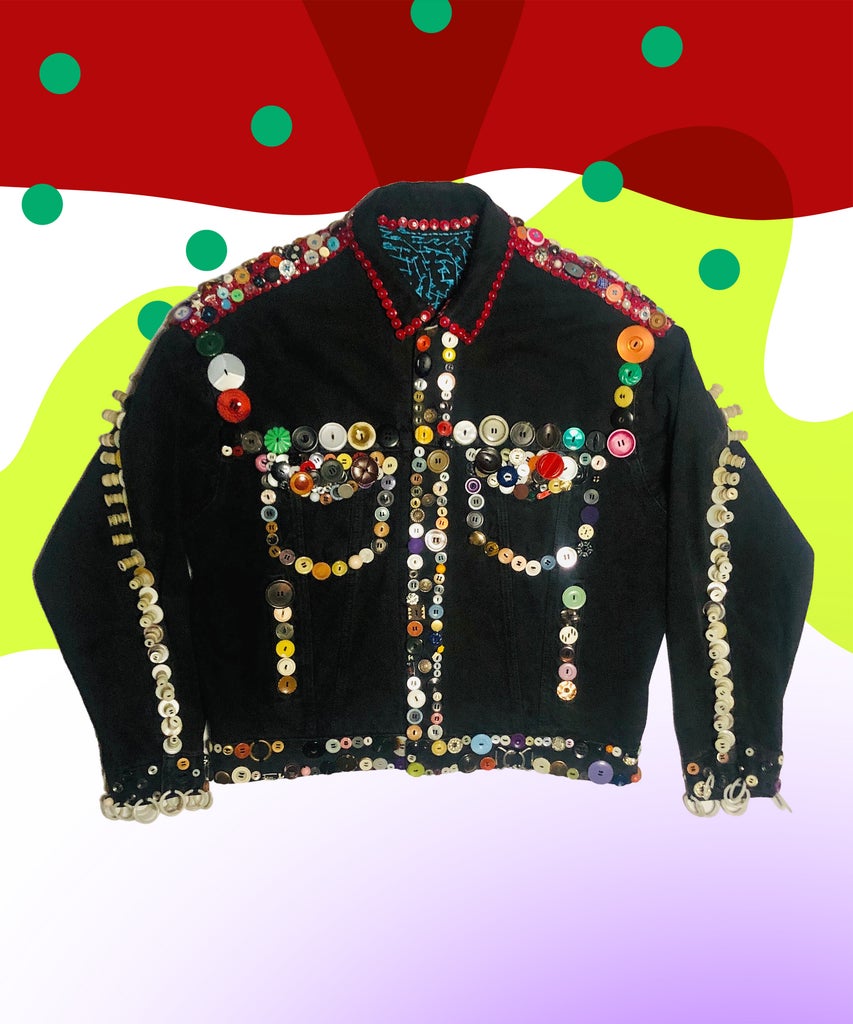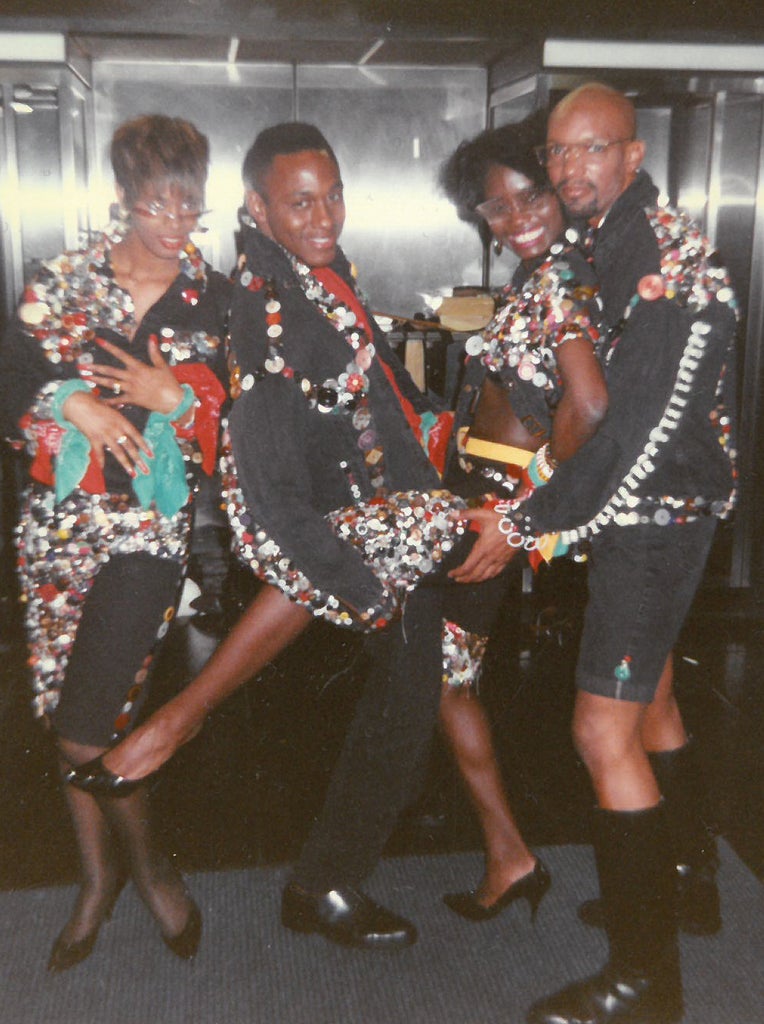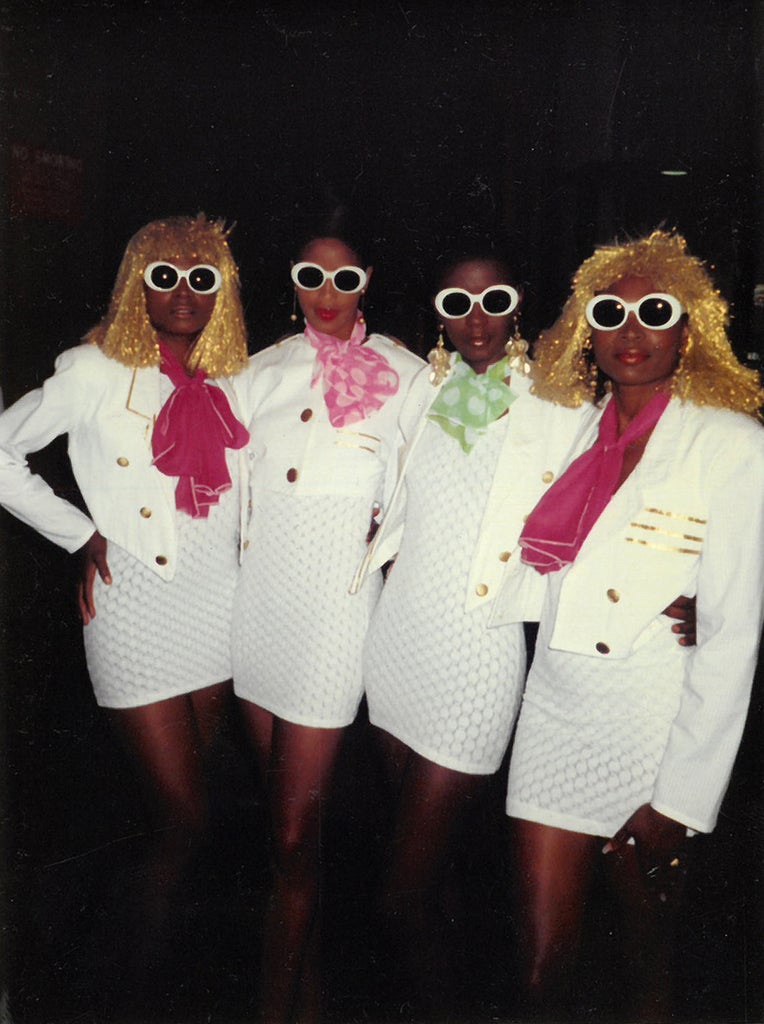
Mononymous art curator Souleo had never heard of the Harlem Institute of Fashion before his partner, designer Beau McCall, started digging up photos taken at its events from the mid-80. “It looked so fly: the people, the runway, the scene,” Souleo told Refinery29. That was the lightbulb moment that resulted in the Showing Out: Fashion in Harlem exhibition at the Schomburg Center for Black Culture in Harlem, which Souleo curated.
“That was really the impetus behind it, wanting to amplify that legacy,” he says.
This year marks the 55th anniversary of the Harlem Institute of Fashion and the Black Fashion Museum, both founded by Lois K. Alexander Lane. While both institutions shut down in the early 2000s, Alexander Lane’s legacy is still palpable in a community that has long struggled for recognition as the birthing ground for many of the world’s biggest pop culture, fashion, and art phenomena. For Souleo, it’s the perfect opportunity to display how Harlem’s fashion community flourished under the leadership of Alexander Lane, who catapulted the careers of Black designers and models upward and cemented the neighborhood as a hub for the fashion industry.
“It’s about finding inspiration, to look at this history to know it’s been done and it’s possible to do something like it,” says Souleo.
From 1979 to 1996, the Harlem Fashion Institute and the Black Fashion Museum hosted a series of fashion shows and events that highlighted local talent at venues like City Hall, the State Office Building near 125th street, and the streets of Malcolm X Boulevard, where the Schomburg Center is located today. Alexander Lane and her team held auditions for both designers and models in front of the State Office Building, making for a nerve-wracking moment for any hopeful wanting a chance to be in the shows.

McCall remembers his audition clearly. It was a full year after he had first witnessed a Harlem Fashion Week show on 135th street, where, he says, he had “never seen so many Black people together in a setting like that.” Right there, he turned to one friend and said: “That’s going to be me next year.”
A year later, he found himself in front of Alexander Lane for the first time with a duffel bag full of denim jackets embellished with piles of buttons, a technique that later became his signature. “They went through all of my garments and reviewed all of my work,” he says. “That weekend I started doing shows.” His designs, including a vintage denim jacket with colorful button embellishments, as well as a floor-length durag decorated with clear buttons, is now on display in Showing Out.
Alongside McCall’s pieces, the exhibition features an immersive journey through the 17-year-long era of Alexander Lane-led Harlem Fashion Week shows (the shows are still produced today under different leadership). The exhibition includes a video piece by former Harlem Fashion Week model and artist Dianne Smith featuring archival footage of the shows. Souleo also included some of the photographs that he dug up from McCall’s home archive, including images of the first time he showcased some of the pieces now featured in the exhibition. There is also memorabilia from the shows, like promotional brochures and event programs, as well as one issue of Pride, a self-published print magazine that showcased fashion talent and styling from the community.
For McCall, these tokens show how Alexander Lane and her team were able to establish a fashion-centered community that, over time, became like a family, rehearsing together on Tuesday and Thursday nights in preparation for the weekend shows and Harlem Fashion Week.
“The camaraderie, the creativity, meeting like-minded creatives — that’s where I was able to create my extended family,” McCall says. He and Smith agree that, when they were young fashion-obsessed people helping develop one of the seminal cultural institutions in Harlem, they had no idea how meaningful their work would become.
“We thought we were fabulous,” says Smith, cracking up in a laugh. But what truly created their close-knit community, according to Smith, was their relationship to the elders. Alexander Lane was in her 80s when McCall and Smith first auditioned for the shows. “She was the house mother; it was definitely the House of Alexander,” Smith says. It became evident that her commanding respect still lives on when I asked McCall and Smith to “describe Lois” and Smith responded: “I want to make clear that it’s ‘Miss Alexander.’ She wouldn’t accept a ‘Lois.’”

Born in 1916, “Miss Alexander” grew up in Little Rock, Arkansas, and moved to New York City during the 1960s. At the time, she was a student at New York University, where she worked on a thesis titled, “The Role of the Negro in Retailing in New York City from 1863 to the Present (1963).” Her mission was clear: she’d show the world that the Black community was instrumental in the creation of American fashion. In 1979, she founded the Black Fashion Museum, which has since been incorporated into the National Museum of African American History and Culture in Washington, D.C.
Until recently, Harlem had a plaque honoring Alexander Lane’s legacy on 126th street. But according to Smith and McCall, it’s been taken out by recent construction. “That in itself, is an issue, because let’s say that house belonged to Valentino — that plaque would still be there,” says Smith.
At a time when the fashion industry is attempting to reconcile its longstanding exclusion of the Black community, Smith says that Alexander Lane’s legacy is crucial. Building spaces for Black fashion creatives is not about “reinventing the wheel,” she says, but rather using this foundation as a blueprint for the plethora of organizations championing Black talent today. “This model existed and this woman was a pioneer, so there is a learning that can happen from that,” she says. “I hope that all of these organizations can give homage to Miss Alexander.”
Between September 9 and 16, audiences coming into the Schomburg Center will have a chance to get to know “Miss Alexander” intimately and celebrate her legacy in style.
Like what you see? How about some more R29 goodness, right here?
The Met’s New Fashion Exhibit Is Right On "Time"

No comments:
Post a Comment